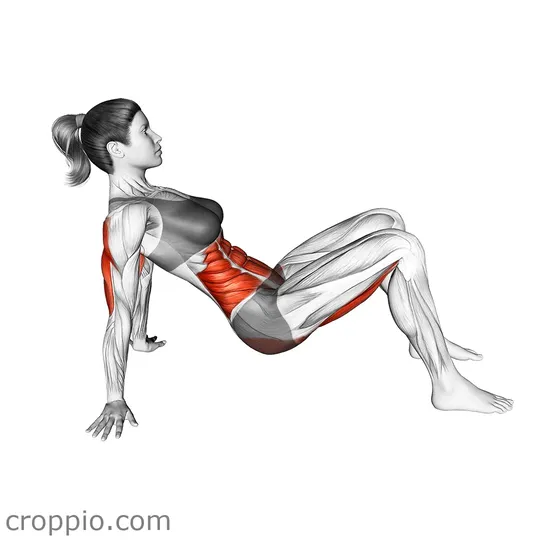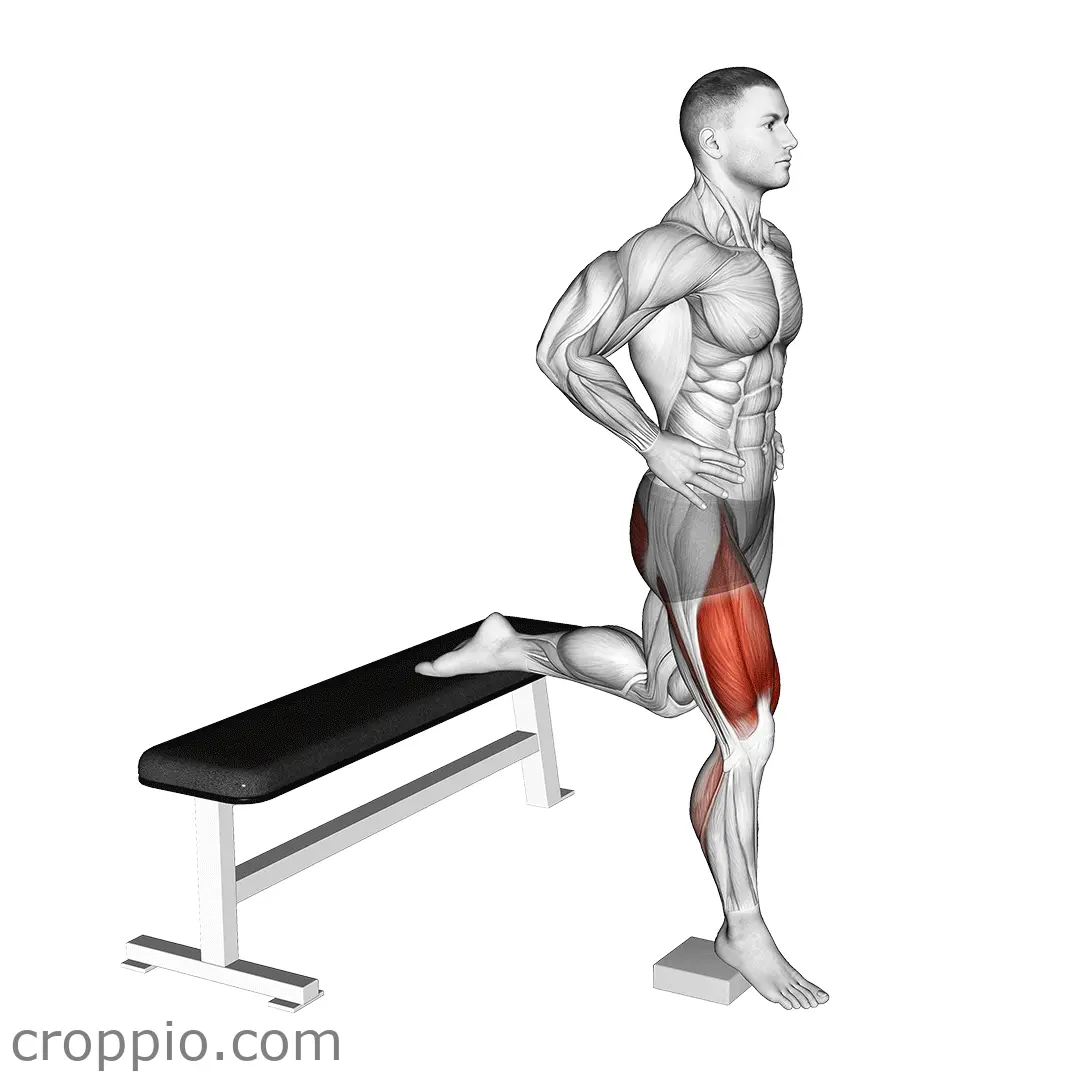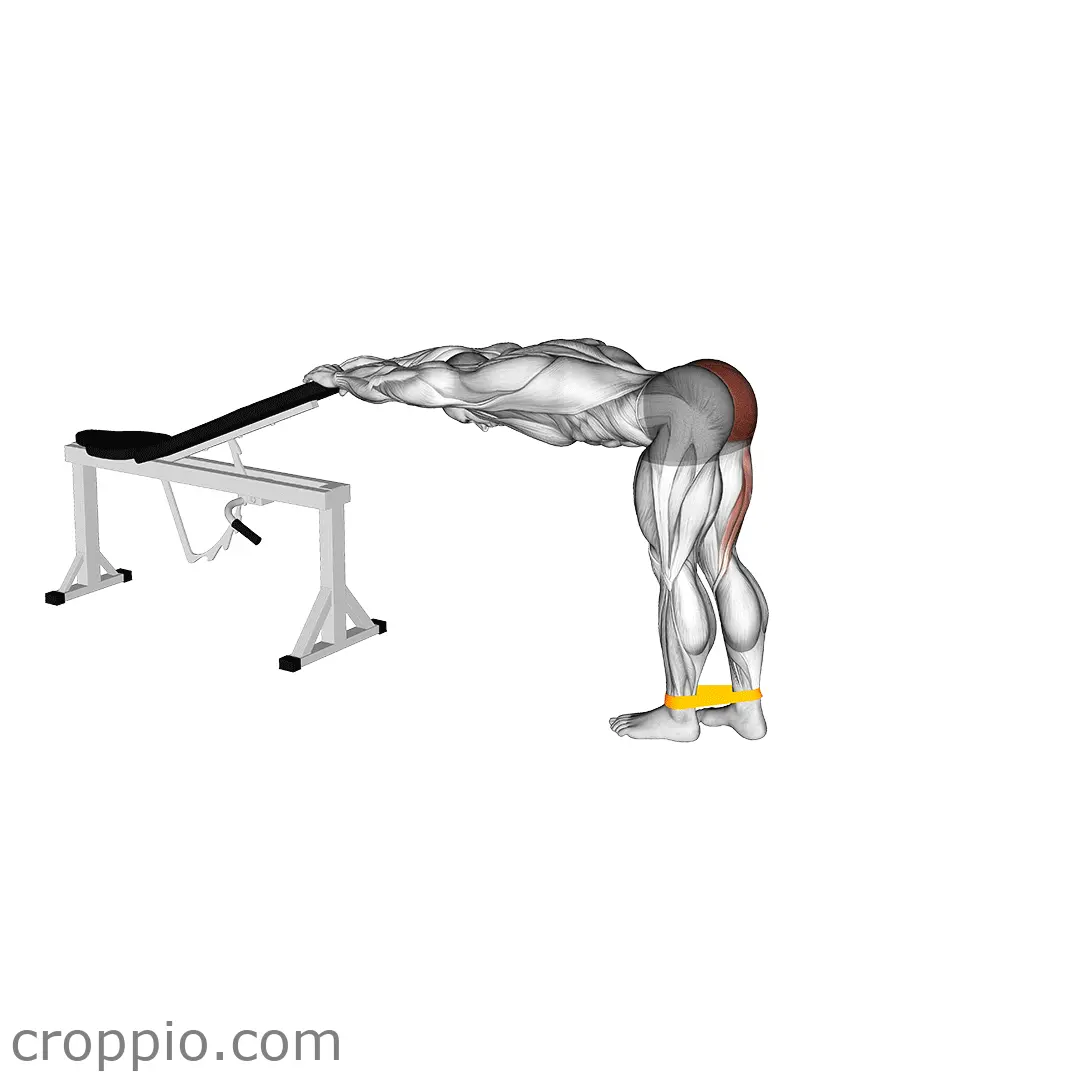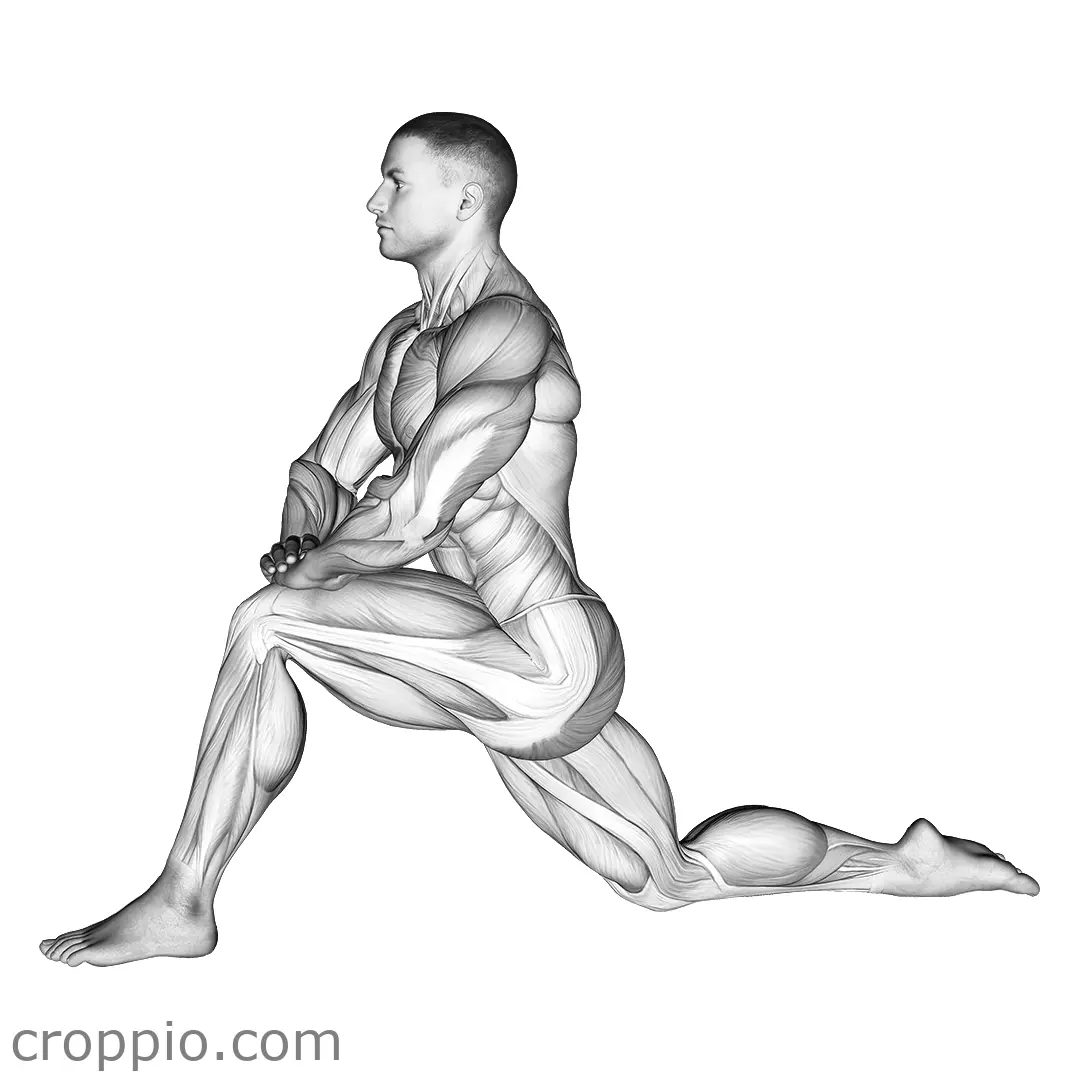Table Top Glute Bridge

Muscles Involved
The tabletop glute bridge primarily engages the gluteus maximus, the largest muscle in the buttocks, which is responsible for hip extension and stabilization. Additionally, the exercise activates the hamstrings, particularly the biceps femoris, as they assist in the movement as secondary muscles. The core, including the rectus abdominis and obliques, also plays a supporting role in maintaining stability throughout the exercise. The tabletop position can effectively isolate these muscles while promoting better muscle coordination and control.
Top Mistakes
- Arching the lower back: Arching your back can lead to strain and reduce the effectiveness of the exercise. Focus on maintaining a neutral spine.
- Inward or outward knee movement: Allowing the knees to collapse inwards or flare out can place extra stress on the joints. Keep your knees aligned with your toes.
- Not engaging the core: Failing to tighten your core can lead to poor form and diminish the benefits. Always engage your core muscles.
- Rushing through the motion: Performing the exercise too quickly can compromise your form. Slower, controlled movements yield better results.
Execution Tips
- Positioning: Begin by sitting on the ground with your upper back resting against a stable surface, such as a bench or a wall. Your body should form a tabletop shape.
- Foot placement: Place your feet flat on the ground, hip-width apart, and ensure they are positioned directly under your knees for optimal alignment.
- Lift with your hips: Press your heels into the ground as you lift your hips towards the ceiling. Imagine squeezing a pencil between your glutes at the top of the movement.
- Control your descent: Lower your hips back down with control while maintaining your engagement to maximize the benefits of the exercise.
Workouts
The tabletop glute bridge can be effectively incorporated into a variety of workout routines. Beginners may aim for 3 sets of 10-15 repetitions, while more advanced practitioners can increase the intensity by performing 3 sets of 15-20 repetitions, potentially adding resistance such as a barbell or weight plates. Complementary exercises include squats, lunges, and deadlifts, which target similar muscle groups and enhance overall strength. Additionally, consider incorporating other glute-focused movements like the single-leg bridge or hip thrusts for a comprehensive glute workout.
Conclusion
The tabletop glute bridge is a highly beneficial exercise for strengthening the glutes and core while promoting stability and coordination. By understanding the muscles involved and maintaining proper execution, practitioners can avoid common mistakes and maximize effectiveness. This exercise not only enhances lower body strength but also plays a critical role in improving posture and reducing the risk of injury, making it an excellent addition to any fitness regimen.



